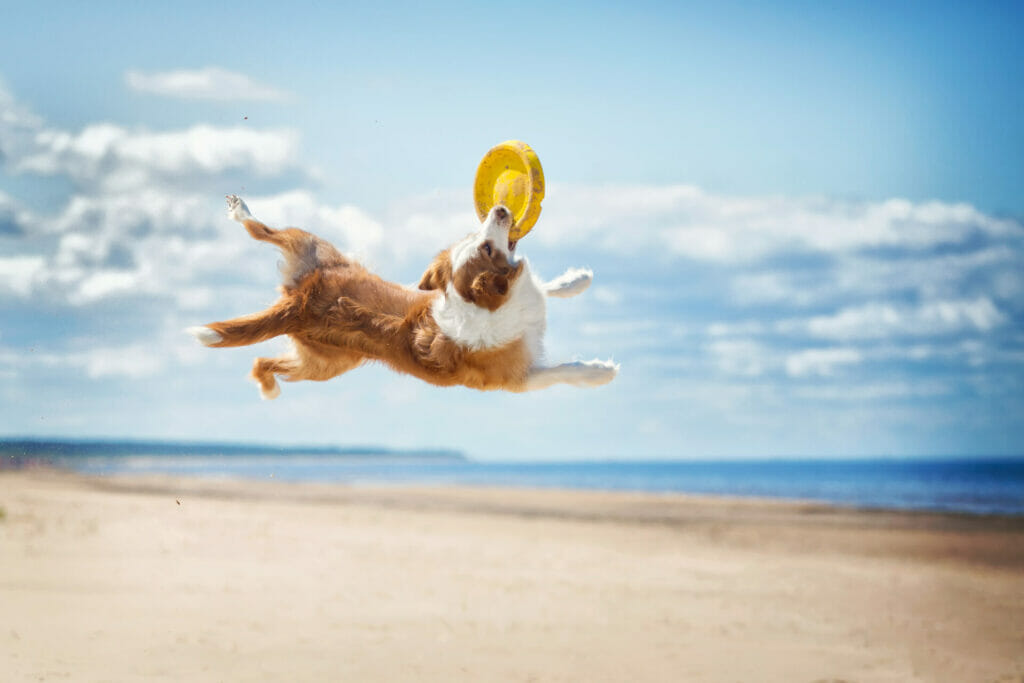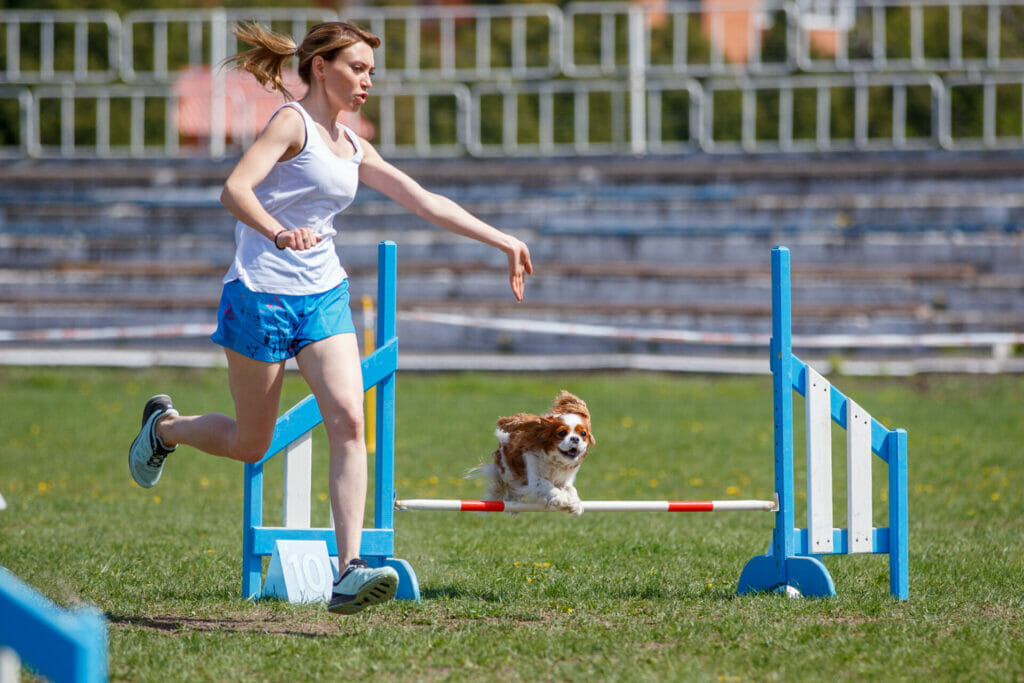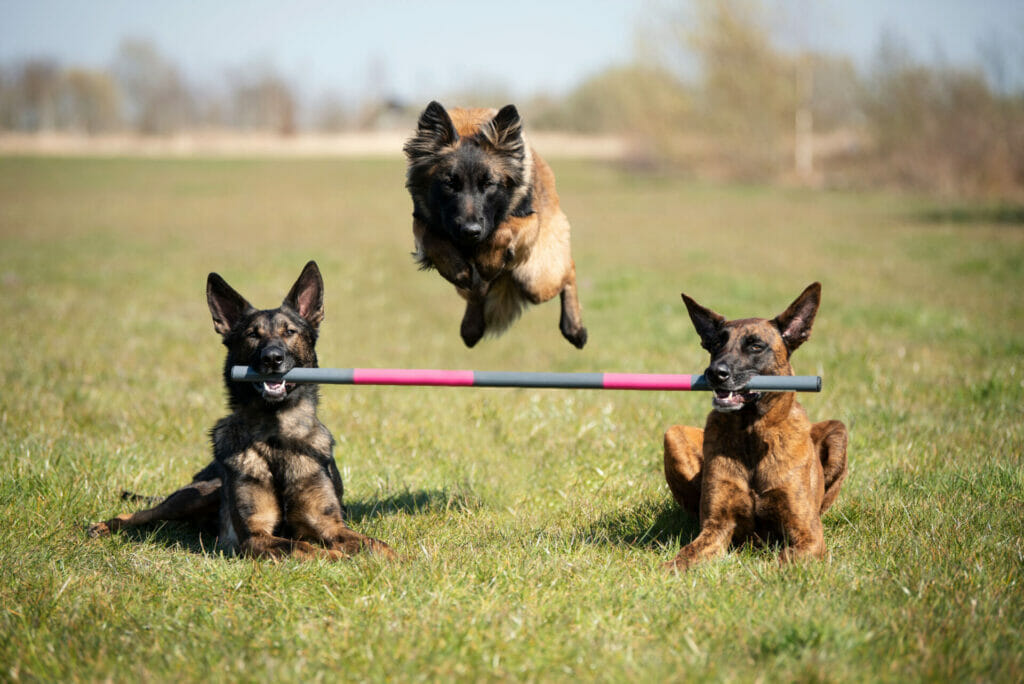We sat down with Amanda Gagnon from AGDT with help from Robert Haussmann of DogBoy NYC to discuss why training doesn’t end with puppyhood and received some of her most important tips of adult training and training in the transition to adulthood.
Why should training continue past puppyhood?
Training isn’t a one-and-done thing with a dog. It’s not the same as fixing a car where you go and then that’s it and you never have to do anything again. Dogs are learning growing beings– They can no sooner stop learning than a human can. Whenever you’re in the room with your dog, one of you is always learning. That’s why it’s important to think of training as something you’ll always do to bond with your dog, or forever training.

How is training for puppies different from training for adults?
When you’re training in puppyhood, there is a lot to learn and you are getting the basics down. In adolescence, a lot of “problem” behaviors start to crop up such as reactivity, pulling, barking, and anxiety. By the time your dog is nearing the end of adolescence, if you’ve had strong training, you and your pup will see a resolution for all those things. So in adulthood training won’t be working on “problem behaviors” but instead on maintenance of prior training, keeping the communication between you and your dog strong, and most importantly having fun with your dog!
What does adult training look like?
Maintenance training is the baseline adult training which has the goal of trying to keep things from regressing so that everything you and your dog learned in puppyhood is maintained. Adult training can also include any training you do together to make improvements or learn new behaviors over time as well. Some training ideas can include playing fetch, going for a walk, sitting on the couch, and only giving treats when your dog is practicing good behavior.

These examples don’t sound like training, how can a dog walk be training?
Everyone has to go on a walk with their dog– whether you live in a suburban environment and it’s only once a day or an urban environment where it is more common. But turning your walk together into training is all about a relationship-building exercise. A good comparison is to think about going on a walk with a spouse as a relationship-building activity– if you ignore each other and are on your phones, it’s still a walk but won’t improve your relationship. But if you’re conversing, it can be a positive experience together. Apply this to walking with your dog, but understand that dogs converse with you in different ways. This difference bubbles up with training. Your way of holding hands is holding their leash; engage in leash training skills so when they pull, go back to basics, show you like it when they walk near you and consistently work cues into your regular training lifestyle.
What are some good cues to weave into every day adult training?
One cue I use a lot is “wait”. Not only is this helpful for going on walks from a safety perspective when coming to an intersection or stoplight, but it is a great way to reinforce good behavior without using food. As your dog becomes an adult it is important to use more real-life rewards because then they learn to give more behaviors we love and we learn what they love to give more of those further strengthening your relationship. A walk is a good example of how to do that throughout life. Notice things your dog loves in the world around you and reinforce behaviors you want to see by giving them those loves– if your dog loves sniffing fire hydrants, make your dog sit, and then release to sniff the fire hydrant, reinforcing that you want them to sit and have control. You can integrate this training throughout your dog’s life to continue to improve and once they have everything set, that’s when people can get into trick training, agility, nose work, all fun activities for your dog.
What’s the point of teaching tricks?
While you might not be the kind of pet parent who is interested in showing off your dog’s trick skills, there are still benefits to trick training as part of your adult training. Every time your dog learns something new, not only is it exciting for them, but you are learning about each other. Throughout the process of training, you can learn to read their body language, which informs communication. Also most importantly, it’s time spent having fun together! Remember that you got your dog to have fun and have a companion, so it is far more important to have fun with your dog than a dog who is behaving perfectly at all times!




















